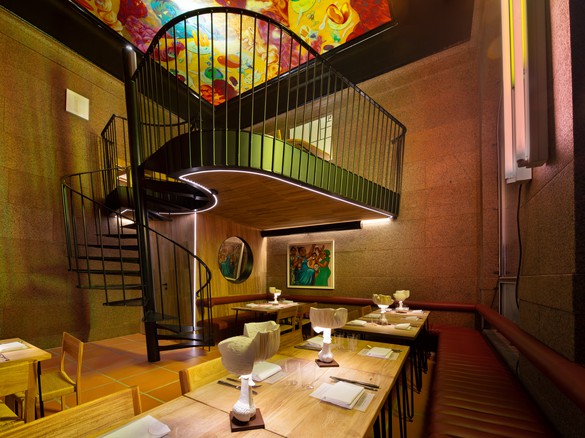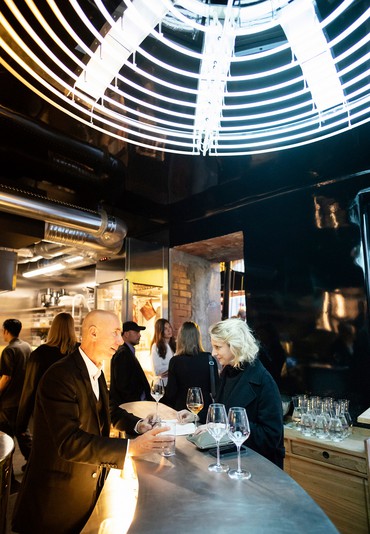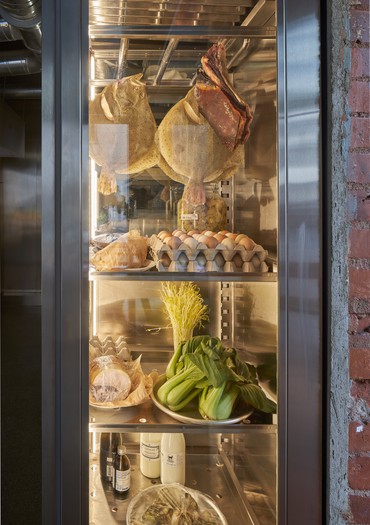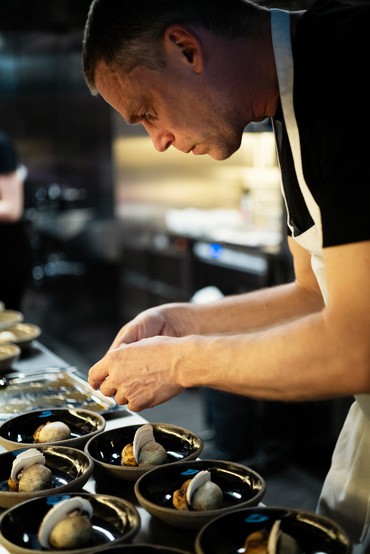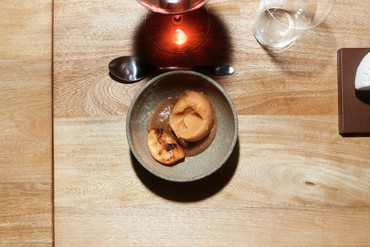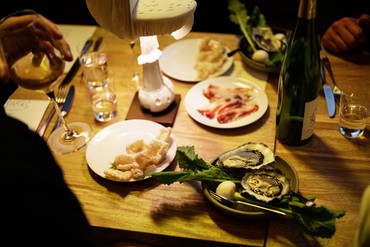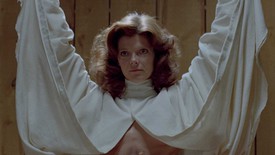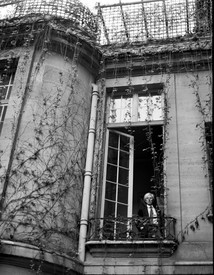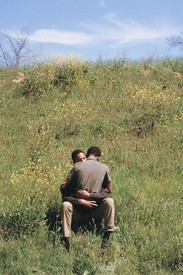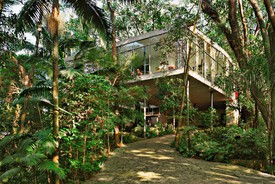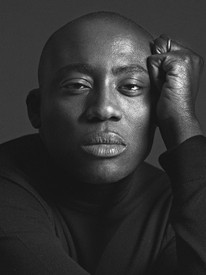
Founding director at Gagosien, Paris and Le Bourget, Serena Cattaneo Adorno has worked with the Christo Estate, Fondation Giacometti, and the Picasso family on several exhibitions, as well as with contemporary artists including Davide Balula, Anselm Kiefer, Jean Nouvel, Sterling Ruby, Richard Serra, Tatiana Trouvé, and James Turrell.

A director at Gagosien since 2002, Mark Francis was formerly founding director and chief curator of the Andy Warhol Museum, Pittsburgh. He has been a curator at the Centre Pompidou, Paris; the Fruitmarket Gallery, Edinburgh; the Whitechapel Art Gallery, London; and the Museum of Modern Art, Oxford, England.

Carsten Höller was born in Brussels in 1961 to German parents, and lives and works in Stockholm, Sweden, and Biriwa, Ghana. Using his training as a scientist in his work as an artist, Höller concentrates particularly on the nature of human self-exploration. He has undertaken many projects that invite viewer participation and interaction while questioning human behavior, perception, and logic. Photo: Pierre Björk
Serena Cattaneo AdornoCarsten, thank you for inviting us to the opening of Brutalisten. It was a wonderful evening, and an experience like no other. To begin, I wanted to ask you how you define “brutalist cuisine.” How is this different from “culinary minimalism,” for instance?
Carsten HöllerI use this term “brutalist”—which is normally applied only to architecture—in conjunction with food not only because I want to express my love of brutalist architecture, but also because the term elicits a certain response, or image, that I’m interested in exploring.
When one hears the term “brutalist,” one initially pictures something very linear, blockish, essentialist; brutalist architecture is thought of as devoid of decoration. But that’s not strictly true—if you look at brutalist buildings, they demand their own way of looking. So I thought that the same should apply to food. Calling it “minimalist” would elicit the idea that you don’t do anything to the ingredients—like putting an arugula leaf on a plate and serving it as is.
Brutalist cooking could be a leaf that you put on a plate, but usually it involves a certain amount of cooking and it can span the whole range, from doing very little to a very sophisticated way of preparing a dish. It suggests that you can make big things in terms of cooking but you don’t have to, and that the result aims at something essential. A key part of it is the taste of the ingredient.
Mark FrancisA lot of your work is about social spaces and experiences that people can have, for instance a space like The Double Club in London from 2008–09, which was really a kind of communal experience. Would you see this restaurant on a continuum with that?
CHWell, there are different ways of answering that question. One would be to say that, as you know, I was a scientist in my former life, and I just can’t resist doing experiments. Instead of experimenting with insects—which I was doing before—I like to do experiments with people in some way. The only difference—and [laughs] it’s a big difference—is that there are no designated scientists anywhere tracking the results. Nobody is watching you and recording data and trying to find out something. It’s you as the participant who is the scientist. I provide an experimental situation, and that’s it.
This applies to the works that you just mentioned, but also to the restaurant. Brutalisten is a social experiment. We want to see what happens if you eat this kind of food, because I’m not aware of any other place in the world where you can eat like this. What happens to you, and what happens to the other people who are there?
And one of the things that we already realized is that this food is very healthy. This isn’t the primary intention of the concept, but rather a side effect.
SCAIn Swann’s Way, the opening work of Proust’s In Search of Lost Time [1913–27], there is a famous passage about asparagus:
Asparagus, tinged with ultramarine and rosy pink which ran from their heads, finely stippled in mauve and azure, through a series of imperceptible changes to their white feet, still stained a little by the soil of their garden bed: a rainbow-loveliness that was not of this world. I felt that these celestial hues indicated the presence of exquisite creatures who had been pleased to assume vegetable form, who, through the disguise which covered their firm and edible flesh, allowed me to discern in this radiance of earliest dawn, these hinted rainbows, these blue evening shades, that precious quality which I should recognize again when, all night after a long dinner at which I had parted from them, they played (lyrical and coarse in their jesting as the fairies in Shakespeare’s Dream) at transforming my humble chamber into a bower of aromatic perfume.1
Does this relate to your “Brutalist Kitchen Manifesto” and the concept of the restaurant?
CHIt’s definitely a very Proustian way of putting it, but I will subscribe to it fully. There are two ways of looking at it: One is that you look at the ingredients, like asparagus, and the other is that you look at cuisine or cooking in general, as we find in restaurants all over the place. It comes from both sides, because you want to understand the asparagus as being unique, not only in terms of its outlook, which Proust is mainly describing, but also in terms of its taste and preparation.
Typically, I have to say, asparagus is overcooked, and chefs often add a heavy, creamy, buttery hollandaise sauce on top of it that mushes it all down. You miss out on all of the little taste spikes and many other nuances. These other chefs are all trying to do alchemy—they’re trying to find gold, when the gold is already there. It’s in the asparagus. It’s all we need.
SCAPoint five of your manifesto says: “The use of overlooked, hard-to-get, or rare ingredients, or ingredients that are generally discarded, are characteristic of brutalist cuisine.” What has been the most surprising discovery you’ve made, and have you explored the idea of grafting two plants from different varieties so that they function as one plant, as you have done with birds in your art practice, for example?
CHI’ve thought about applying this technique, but if you take one part from one ingredient and one part from another, it’s ultimately against the brutalist ideal. However, going back to asparagus, if you take raw asparagus and you cut it in the middle and put it together with steamed asparagus, then you would have a very interesting consistency and taste experience. That’s how we serve our asparagus, raw and steamed, in a liquid made from fresh and fermented asparagus extract.
MFDo you think that Stockholm is a particularly interesting place to do a project of this sort? Does the food that’s seasonally or geographically available make it more possible? Or is it something that you could imagine doing in Japan or Mexico or anywhere you wanted?
CHI think you can basically do it anywhere you want. But a place like Stockholm, which has a very strong seasonality—the harsh winter and the almost continental summer—organically brings a lot of change during the year that makes the process interesting. That said, if you think about existing cuisines in some countries, aspects of their traditions have brutalist cuisine as part of the spectrum. In Italy, for instance, if you just forget about the olive oil that they put on everything—[laughs] sorry, Serena—they have beautiful brutalist dishes, like the preparation of cuttlefish in the south. In Spain, you have some tapas that are basically brutalist. And I would say that Japan is probably the country in the world where people eat in a brutalist fashion already. There’s a famous dish in Japan where you marinate cuttlefish in the contents of its own gland that you find inside the main body for three days and it becomes a very delicious dish with this completely novel texture.
SCABrutalism famously sought to adopt earlier principles of postwar design, when reconstruction was a necessity. If you apply this to food, is it your intention to reconstruct and simplify our view of nature to better appreciate it? Are you bringing things back to something that is much purer in a society where value has been put elsewhere?
CHYes. If you want to understand something, you must separate it from the rest. From this line of thinking, it became clear that the project needed to be modeled against vegetarianism. It’s disrespectful of the living plant or mushroom to say, “I’m not eating meat, but I’m killing lots of other organisms anyhow.” This is a question about life and arriving at a radical definition of it.
I’ve written another manifesto, which I’m happy to send you, called “The No Kill Kitchen Manifesto.” It’s about a cuisine project where you cook food without killing anything that’s bigger than a single-celled organism. So for a mushroom, for instance, you pick only the fruiting body of the mushroom and leave intact the big mycelium on the forest floor, or wherever it grows, and the mushroom is not damaged; it stays alive. Then some things, like fruits and so on, are meant to be eaten—they’re very tasty and are brightly colored so that other organisms can easily find them, eat them, and spread the seeds essential to its propagation. It’s the same case with truffles. But this idea of saying, “Okay, I’m not eating a cow but I’m eating a lettuce” contains a definite principle. A lettuce wants to live, too. I find it very anthropocentric to think that the lettuce doesn’t have the same life as the cow.
SCAWhere do nature and sensuality stand in the new world where digital (nonfungible) possibilities seem to be taking over?
CHNature is nature. It’s always there, and we’re part of it. Everything else is minor—it doesn’t really matter. The biggest thing is that we live in a context together with other living organisms. This will never change, unless we manage to extinguish ourselves, and then the rest will go on. That’s the big umbrella under which we stand.
MFI was wondering whether you would see this also in a historical or an intellectual context. There was Claude Lévi-Strauss’s book The Raw and the Cooked, from 1964, and it seems to me that Brutalisten comes down on the side of the cooked rather than the raw, even if raw might have this kind of singularity. But where would you see yourself in that anthropological sense?
CHFergus Henderson has been an influence with his concept of nose-to-tail eating. I thought, That’s a great idea, but nose-to-tail means animals, exclusively; what happens if you apply that to all kinds of ingredients? If you want to prepare a salad brutalistically, you cannot use any oil or any other ingredients in order to make the dressing, so you have to think about the salad itself—maybe you want to use the root of the salad green, because with the root you can maybe do some kind of fermented juice, or you want to use the seeds. So it’s like nose-to-tail eating, but with plants and mushrooms, and animals and everything else.
I mentioned side effects earlier, in reference to the healthiness of the cuisine. Another is: You don’t throw much away. This is ecologically responsible, and again, not the principal matter of the restaurant or manifesto, but a positive side effect.
SCADo you eat brutalist every day?
CHThis will sound like a promotional statement, but it’s not: I like it more and more, I have to say. I feel very good from eating like this. I feel much better now than I felt ten years ago. So I cook, if I can, brutalistically.
Really, more than anything, I like the honesty of this cuisine. The food doesn’t hide; it’s not under other things and pummeled into some mishy-mashy taste. That honesty forces one to find a good ingredient, and that then also probably, in the long term, will increase the demand for very good ingredients, which means that people will look more at things that are growing close to them because they’re better, they’re fresher, they come to the table in better shape.
SCAYou should open in Paris. I could be a habitué.
CHYes. One step after the other [laughs]. This has been a lot of work, and I’m happy it’s going so well and now we need to get it running on a regular basis. My hope, though, would be that other people take up the idea and make their own interpretations.
1Marcel Proust, Swann’s Way: In Search of Lost Time, Volume 1, trans. Lydia Davis (New York: Penguin Classics, 2004), p. 122.
Brutalisten, Regeringsgatan 71, Stockholm
